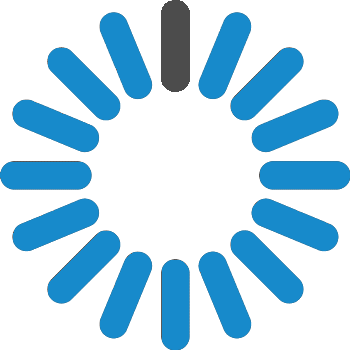Microsoft.NET Framework Certification Training
.jpg)
Introduction:
Want to become a CertOcean's certified MS.NET
Framework Professional? This is an online Microsoft Net Framework
Training Course that has been designed in the best way to make you aware
of the MS.NET Frameworks and also the skills of creating World Wide Web
sites, Web Services, and even real Windows Applications.
Why should one take Microsoft Net Framework Training Course?
* A big community of 6 million+ developers and 1.7K companies already contributing to the .NET platform.
*
Because of the easy and comfortable usage, various MNCs like TCS,
Vodafone, Mindtree, Samsung, Alaska Airlines, Stack Overflow, many
others make use of .Net in different industries.
* The average salary of a Microsoft .Net Developer is $92,000.
Course Curriculum
Learning Objectives: In this learning module, we will understand .NET Framework Architecture, Components, Visual Studio Software Installation, and the different languages supported in .NET.
Topics: Introduction to .NET Framework, Architecture, Evolution, .NET Versions, .NET Framework Components, Visual Studio Versions, Installation, application, Components of IDE, Features of Visual Studio IDE, Creating Project, Solution Using Visual Studio IDE and Shortcuts in IDE.
Understanding OOPs concepts and implementation using C#.NET. Understanding how to handle exceptions, working with .NET Concepts properties, indexers, delegates, Understand DataObjects in System.Data.
Topics: C# language basics, importing namespace, Create Console Application. Using Convert, String, DateTime, Arrays, in detail OOPS in C#, .NET. Create and implement class, object, method, Polymorphism Inheritance, abstract class, interface, Exception Handling, properties and indexers, Delegates, Data Objects in C#.
Topic: We will teach topics like Visual Studio IDE for Windows Forms, Creating Windows Forms, Working with controls like Label, TextBox, Button, RadioButton, CheckBox, ListBox, ComboBox, PicureBox, Dialog, Timer, and Handling Events.
Topics: Ado.NET Architecture and ADO.NET Library, Creating and Establish database connectivity, Connection versus Disconnection Model, CRUD operations using Connection- Oriented Model with Sql Command and Sql DataReader, Navigation of data in data objects using Disconnection oriented model with Sql Data Adapter DataSet, DataTable, etc.
Topics: Collection, Collection API, Generics, Generic Collection, Index and Key-Value paired collections, Assembly, Types of assemblies, Create Assembly, Create strong name, Install Assembly in GAC, Consume class library, etc. will be taught.
Topics: ASP.NET Specification, Webpage, Website, Web Application, WebServers (IIS, IISExpress), PostBack, PostBack types, Inpage versus Codebehind, Page Life Cycle events.
Topics: Web Server Control, Available Web Sever controls, Using regular controls like, label, texbox, ListControl, RadioButtonList, CheckBoxList, DropDownList, BulletedList, ListBox, Validation of input using validation controls, etc.
Topics: Introduction to Linq, Linq type queries, sql like queries, Linq syntax, access Data Source like Array, XML and database using Linq, Intro to 3-Tier, e.g., on 3-Tier Application, etc.
Topics - Introduction to State Management Techniques, ViewState, QueryString, Session, Cookie, Application and Cache, Ajax introduction and Architecture, Ajax extension controls, Demo Example, Task, etc.
Topics: Introduction to Cyber Security, Security in ASP.NET, Authentication (Anonymous Authentication, Windows Authentication, Forms Authentication), Authorization, Securing a page and folders, WebService Introduction, SOA, SOAP, WSDL, UDDI, etc., Example and Task,etc.
Course Description
Microsoft Dot NET course in CertOcean organization is a 30 hours course, which covers all the concepts that made .NET probably the most popular Microsoft Framework. Starting from the basics, i.e., Framework Architecture, make the first and basic applications. We will be using ASP.NET and IIS to make the user view and make your Web Application more secure. At the end of the Dotnet Course, we will also be creating Web Applications and Web Services using MS.NET Framework in different languages.
1. Microsoft Framework Architecture
2. Development of Console Application
3. Building a Windows application
4. OOP using C#.NET
5. Data access mechanisms provided by ADO.NET
6. Create and consume Libraries (.dll)
7. Create a web application using .NET
8. Integrating IIS with ASP.NET
9. Working with POSTBACK
10. Developing WebSite and WebApplication
11. Application Security
12. Development of WebService and Consume WebService
.NET training provides application development in the OOP model and support to develop Windows App, Web Application, and its Services. It also allows the development of applications in different Layered/Tiered models to work on the main business logic rather than worrying about the non- application code. In order to increase the productivity and efficiency of the developer, Visual Studio consists of various features like code snippets, reference highlighting, intellitrace, and IntelliSense.
Features
Self-Paced Training
You will undergo self-paced learning where you will get an in-depth knowledge of various concepts that will be covered in the course.
Real-life Case Studies
Towards the end of the course, you will be working on a project where you are expected to implement the techniques learnt during the course.
Assignments
Each module will contain practical assignments, which can be completed before going to next module.
Lifetime Access
You will get lifetime access to all the videos,discussion forum and other learning contents inside the Learning Management System.
Certification
CertOcean certifies you as a Microsoft .Net Developer based on the project reviewed by our expert panel.
Forum
We have a community forum for all our customers that further facilitates learning through peer interaction and knowledge sharing.
Frequently Asked Questions (FAQs):
As soon as you register for the course, your LMS (The Learning Management System) access will be functional. You will immediately get access to our Dot NET course content in the form of a complete set of Videos, PPTs, PDFs, and Assignments.



